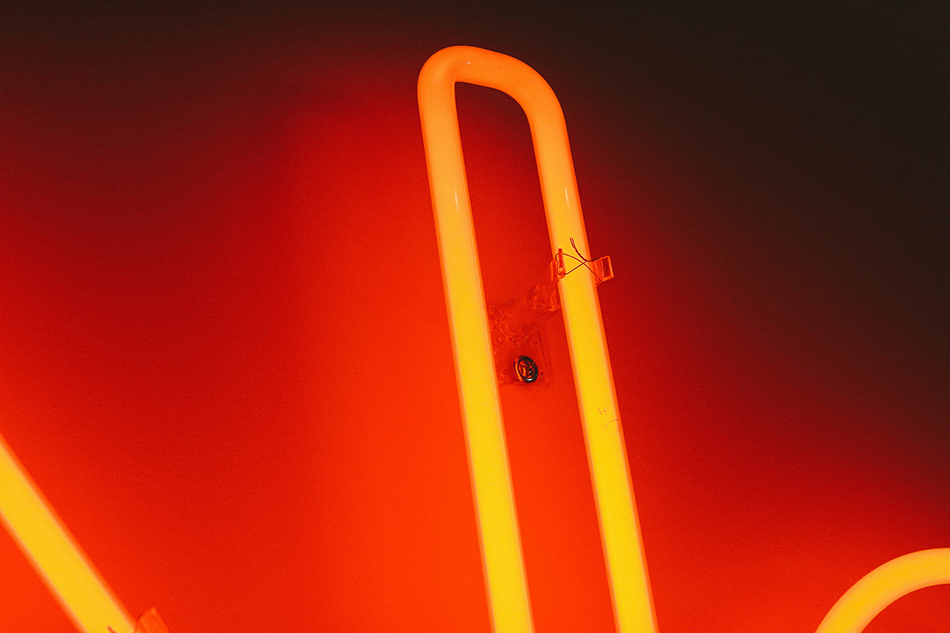Time:2025-05-22
In the fast-paced world of design and marketing, mini neon lights have emerged as a versatile tool for creating impactful, adaptable, and memorable experiences. These compact yet luminous solutions are transforming industries by blending aesthetic appeal with functional innovation. This article delves into the evolving applications of mini neon lights, their technological advancements, and their role in shaping modern branding and spatial design.
The Rise of Miniaturized Neon: Beyond Traditional Boundaries
Mini neon lights are redefining how businesses and creators approach illumination by offering:
Space Efficiency: Ideal for small-scale installations, such as tabletops, retail displays, or wearable accessories, without compromising visual impact.
Design Flexibility: Bendable, modular designs that adapt to curves, angles, and intricate patterns, enabling bespoke creations for unique branding.
Portability: Lightweight, battery-powered options for pop-up events, outdoor activations, or temporary installations.
From boutique storefronts to interactive art exhibits, mini neon bridges the gap between practicality and creativity.

Technological Innovations Enhancing Mini Neon
Recent advancements are expanding the capabilities of these compact systems:
Energy-Efficient LEDs: Replicating neon’s signature glow with lower power consumption and extended lifespan.
Smart Connectivity: Integration with mobile apps for remote color control, dynamic lighting sequences, or synchronization with music.
Durable Encapsulation: Weather-resistant silicone or acrylic coatings for outdoor use, resisting moisture, UV exposure, and physical wear.
Wireless Modularity: Magnetic connectors and snap-fit systems enabling rapid assembly and reconfiguration.
These innovations empower users to deploy mini neon in dynamic, ever-changing environments.
Strategic Applications Across Industries
Retail and Hospitality
Product Highlighting: Accentuating merchandise with subtle neon outlines or backlighting to draw customer attention.
Ambiance Crafting: Creating intimate dining spaces or lounge areas with soft, color-adjustable neon accents.
Events and Experiences
Interactive Installations: Mini neon pathways or touch-reactive walls that respond to guest movements for immersive engagement.
Brand Activations: Portable neon logos or hashtags for festivals, trade shows, or social media-driven campaigns.
Fashion and Wearable Tech
Illuminated Apparel: Embedding mini neon into clothing, accessories, or footwear for avant-garde runway shows or nighttime events.
Customizable Jewelry: Neon-lit pendants or bracelets that adjust colors to match outfits or moods.
Sustainability in Mini Neon Design
As eco-consciousness grows, the industry is prioritizing:
Recyclable Materials: Silicone and acrylic components designed for easy disassembly and recycling.
Solar Integration: Solar-charged battery packs for off-grid installations, reducing reliance on traditional power sources.
Circular Models: Rental programs and refurbishment services to extend product lifecycles and minimize waste.
For instance, a London design studio recently launched a zero-waste neon collection using 100% recycled silicones.
Trends Shaping the Future of Mini Neon
Bio-Inspired Designs: Mimicking natural patterns like bioluminescent organisms for organic, calming lighting effects.
AR/VR Hybrids: Combining physical neon with augmented reality overlays for interactive retail or educational experiences.
Micro-Branding: Startups leveraging mini neon for compact, eye-catching office decor or packaging accents.
Health-Centric Lighting: Tunable spectrums that align with circadian rhythms in wellness centers or home environments.
Overcoming Implementation Challenges
Heat Management: Optimizing LED placement and heat sinks to prevent overheating in compact designs.
Aesthetic Consistency: Ensuring color uniformity across batches for large-scale or multi-location projects.
User Education: Providing clear guidelines for maintenance, charging, and creative customization to maximize usability.
Case Studies: Mini Neon in Action
Fashion Forward: A Parisian designer incorporated mini neon into a haute couture collection, with garments glowing in sync with runway music.
Retail Innovation: A tech store used mini neon to create a “hovering” product display, attracting viral social media attention.
Urban Revitalization: A city park installed solar-powered mini neon benches that illuminate at dusk, enhancing safety and aesthetics.
Future Frontiers: Where Mini Neon is Headed
Self-Sustaining Systems: Energy-harvesting neon using kinetic or thermal energy from the environment.
AI-Driven Customization: Algorithms generating personalized neon designs based on user preferences or cultural trends.
Biodegradable Neon: Plant-based materials that decompose post-use, aligning with zero-waste initiatives.
Conclusion
Mini neon lights are proving that size is no barrier to impact. By merging cutting-edge technology with artistic vision, these compact systems are redefining how brands and designers engage audiences, enhance spaces, and express identity. For businesses, the opportunity lies in embracing mini neon’s versatility to create memorable, adaptable, and sustainable solutions that resonate in a visually saturated world.
To stay ahead, prioritize collaborations with innovators who push the boundaries of material science and smart integration. In the realm of mini neon, even the smallest glow can illuminate the grandest ideas.